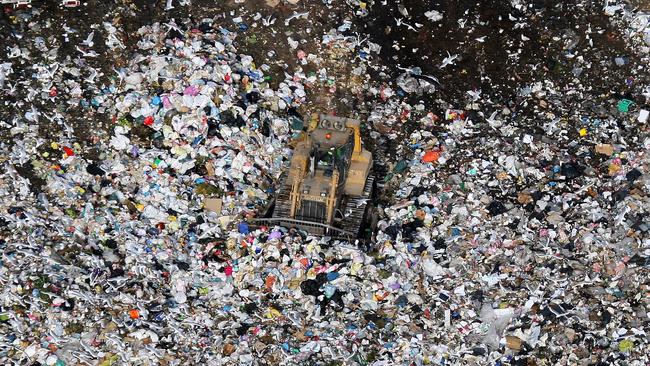Giant recycling plant in Melbourne’s southeast could solve waste crisis
An ambitious new plan is set to completely change the way Melbourne manages its waste, as current measures climb above capacity. And it might be good news for those hoping their rubbish doesn’t end up in the tip.
VIC News
Don't miss out on the headlines from VIC News. Followed categories will be added to My News.
A giant waste-to-energy plant is set to be built in order to tackle Victoria’s waste crisis, helping divert up to 80 per cent of household rubbish from landfill.
Sixteen local councils have joined together in an unprecedented move to spearhead the creation of Melbourne’s largest advanced waste processing facility, with industry expected to invest up to an estimated $650 million.
As the state’s rubbish woes hit fever pitch, more than a dozen councils from Melbourne’s south east will on Tuesday seek industry proposals to build a state of the art processing plant which could see waste converted into energy and provide a much-needed alternative to landfill.
Current landfill sites in the city’s southeast are at capacity, with many councils forced to truck their waste to the western suburbs for dumping.
And with the last rubbish tip in the area set to close by 2025, the need for an alternative is looming, councils say.
The council-led initiative, the biggest-ever tender in waste infrastructure, together with the Metropolitan Waste and Resource Recovery Group will seek to find a solution to the problem of growing household waste.
Advanced waste processing allows rubbish — not including recycling or green waste — to be converted into energy as well as extracting valuable materials that would otherwise be buried in the ground.

While advanced waste facilities are not common in Australia, they have been used effectively around the globe for some time, MWRRG CEO Jill Riseley said.
Ms Riseley said the collaboration of so many local councils will be the key to its success.
“It’s not a problem councils could solve individually,” Ms Riseley told the Herald Sun.
“We can’t stick our heads in the sand – or in the landfill.
“It’s not a problem that’s going to go away, it’s really important that we find a solution together,” she said.
Melbourne’s southeast are among the fastest growing suburbs, with household waste expected to increase by 40 per cent in the next 25 years.
Bayside City Council CEO Mick Cummins said residents’ waste was already going to rubbish tips in the western suburbs.
“It’s not sustainable,” Mr Cummins said, adding that building a facility in the southeast would cut down on transport costs and greenhouse gas emissions.
“It’s a big deal to have 16 councils representing millions of Melburnians to co-operate on a major piece of infrastructure,” he said.
“The benefits of us working together are huge.”
The tender process is expected to take up to two years, with a further five or six before the facility is fully operational.
Industry is expected to invest between $300 and $650 million to build the plant.
Advanced waste processing facilities are regulated by the Environment Protection Authority (EPA) Victoria and any facility will need to be appropriately located, constructed and operated according to strict regulations, Ms Riseley said.
MORE NEWS
WHY WE HAVE SO MANY BINS, BUT ARE RECYCLING LESS THAN EVER
VICTORIAN HOUSEHOLDS SET FOR RECYCLING SYSTEM OVERHAUL

